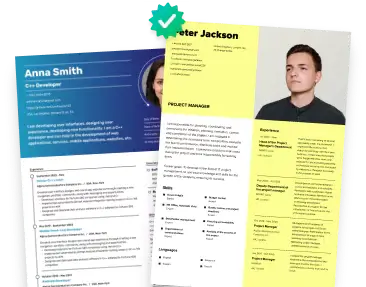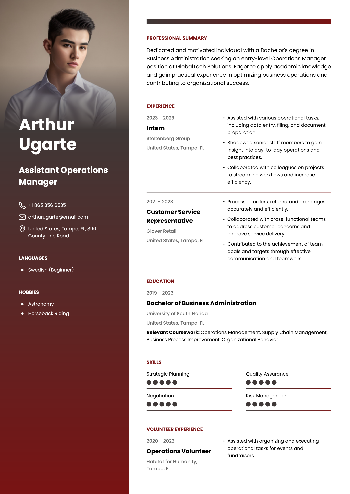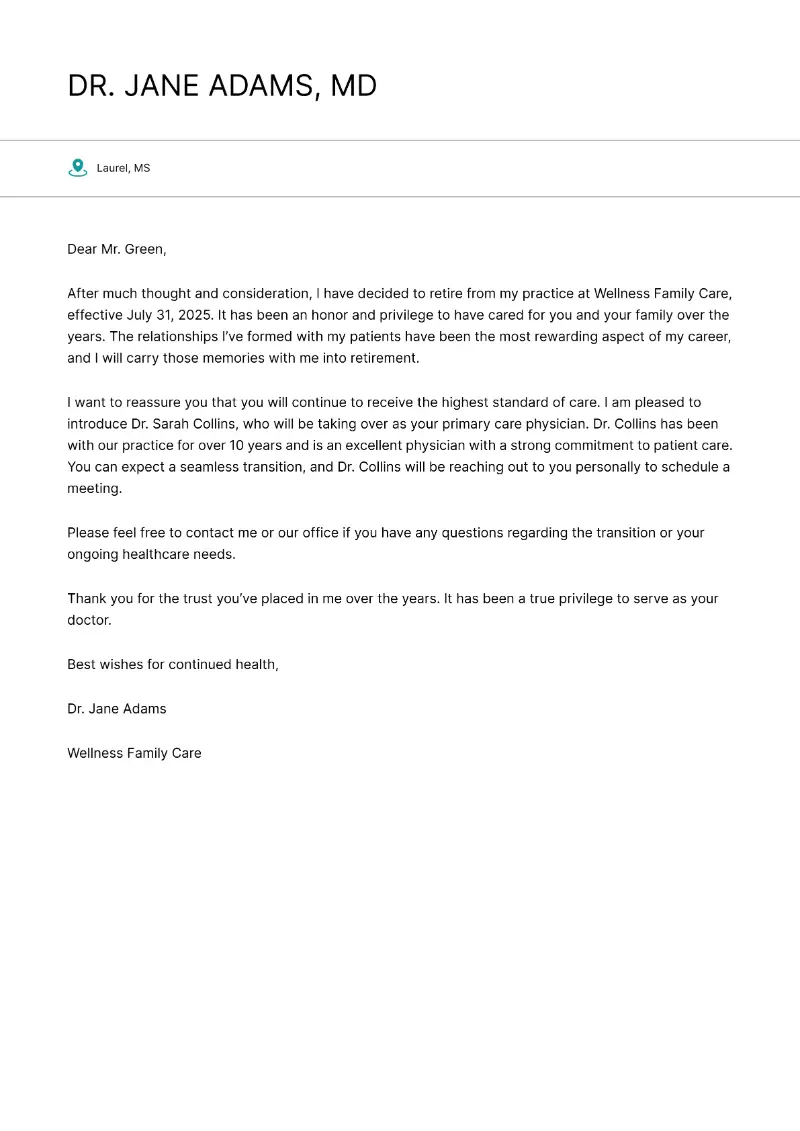When it comes to job hunting, your resume plays a pivotal role in making a lasting first impression. To ensure that your application stands out for all the right reasons, it's important to follow certain resume dos and don'ts.
In this article, we’ll walk you through the resume writing rules that will help you present your qualifications in the best possible light and boost your chances of landing your dream job.
Resume dos
A well-crafted document highlights your qualifications, experience, and skills in a way that’s easy to navigate. To help you make the best impression on hiring managers, here are the essential rules for resume that will set you up for success.
1. Tailor for each job
One of the most important things you can do is to customize your application to match the specific role.
Underline abilities, experiences, and achievements that align with the requirements. This demonstrates that you’ve done your research and are genuinely interested in the position.
Resume how tos: Read through the job posting carefully and incorporate skills from the description.
2. Use a professional format
Use clear resume section headings and keep the layout simple. Avoid using excessive colors, fonts, or graphics, which can make your resume appear cluttered.
Stick to standard fonts like Arial, Calibri, or Times New Roman (size 10–12 pt) and maintain consistent formatting throughout the document.
Resume how tos: If you're unsure how to format your resume, create a resume online to be guided through the process.
Create your professional Resume in 10 minutes for FREE
Build My Resume
3. Strong summary or objective
A concise paragraph at the beginning of your resume can provide hiring managers with a quick snapshot of who you are and what you bring to the table.
A resume summary focuses on your background, while an objective outlines your career goals and why you’re a good fit for the job.
Resume how tos: Keep it brief (2-3 sentences) and zoom on how your qualifications align with the employer’s needs.
Detail-oriented marketing professional with over 5 years of experience in developing and executing data-driven campaigns. Proven track record of increasing brand visibility and driving engagement across digital channels, with expertise in social media management, SEO, and email marketing. Adept at analyzing market trends and customer behavior to inform strategic decisions.
Seeking a challenging position as a marketing coordinator where I can leverage my strong communication skills, creativity, and 3 years of experience in digital campaigns to drive brand growth and engage target audiences effectively.
4. Focus on achievements
Rather than listing only your job responsibilities, center on your contributions in each role. Highlight measurable results such as increasing sales, improving efficiency, or leading successful projects. This not only demonstrates your skills but shows how you added value to your previous employers.
Resume how tos: Apply bullet points to describe your impact and include numbers or percentages where possible (e.g., “Increased sales by 20% within six months”).
5. Keep it concise
Keep your resume to one page format (for early-career professionals) or two pages (for those with more experience). Include only the most relevant and recent roles, achievements, and skills.
Resume how tos: Limit your work history to the last 10–15 years, and omit unrelated roles.
6. Include keywords
Many companies use Applicant Tracking Systems (ATS) to screen resumes before they’re reviewed by hiring managers. To pass through these systems, make sure to incorporate relevant keywords from the job description that align with your experience. ATS typically search for terms related to titles, technical skills, and specific qualifications.
Resume how tos: Look for industry-specific terms and skills in the job posting and naturally insert them.
7. Use action verbs
To make your document more dynamic, add action-oriented language to tell about your accomplishments. Words like led, achieved, managed, and optimized convey a sense of proactivity and achievement.
Resume how tos: Start each bullet point with an action verb.
8. Write contact information
Ensure your contact details are easy to find and up-to-date. At the top of your resume, place your full name, phone number, email address, and (if relevant) LinkedIn profile or personal website.
Resume how tos: Use a professional email address that includes your name (e.g., yourname@email.com).
Resume don'ts
Creating a standout document is crucial, but it's just as important to avoid common mistakes that can hinder your chances.
While showcasing your skills and experience is essential, certain missteps can quickly turn your application into a red flag for hiring managers. Below are the most frequent resume mistakes.
1. Unprofessional email
An email that includes nicknames, slang, or inappropriate references can distract from your qualifications and might even lead hiring managers to question your attention to detail.
Along with the address itself, it’s important to choose a reputable provider. Gmail, Outlook, and Yahoo are reliable, widely used services that are commonly recognized in business settings.
Do not use:
Too informal addresses like coolguy123@gmail.com, baddog@aol.com, or partyqueen@hotmail.com.
2. Irrelevant information
While it's tempting to list everything you've done in your career, it’s crucial to focus only on the details that are most relevant to the position. Including unnecessary data can make it harder for employers to see your true value.
Do not add:
- Personal info. Age, marital status, religious beliefs. These could lead to unintended bias.
- Unrelated experience. If you’re applying for a marketing role, there’s no need to list your high school job as a cashier.
- Salary history. This data is typically discussed later in the hiring process.
- Routine tasks. Overly detailed descriptions of responsibilities that don’t highlight your unique skills.
3. Don’t lie
Honesty is one of the most important qualities employers look for in potential candidates, and your resume is no exception.
Misrepresenting your impact, background, or accomplishments may make you appear more qualified, but it can backfire in a major way.
Remember:
- Employers often verify the information you provide, whether through checks, reference calls, or skill assessments.
- Word of dishonesty can spread quickly within industries.
- False degrees or licenses could open you up to legal action.
4. Generic statements
When writing a resume, one of the top sections is the opening statement, which includes either an objective or a summary.
However, generic introductions are a major turnoff for hiring managers. They are vague, unoriginal, and fail to highlight what makes you stand out as a candidate.
Cliche summary and objective examples:
- "Seeking a challenging position in a reputable company to utilize my skills and grow professionally."
- "To secure a job where I can contribute to the company's success."
- "Desiring a position where I can advance my career and gain new skills."
- "Ambitious candidate focused on contributing value through creative problem-solving and continuous learning."
5. Jargon
Using industry-specific buzzwords on your resume can seem as a good way to demonstrate your expertise, but overloading your document with technical terms or acronyms can have the opposite effect.
While some terminology is necessary, especially in specialized fields, excessive jargon can be difficult to understand. The key is balance—ensure that your content remains clear, accessible, and readable.
What not to put on a resume:
- Buzzwords like “synergize,” “scalable growth,” “cloud-based solutions,” “digital transformation,” and “KPIs”.
- Industry jargon such as "omnichannel marketing strategy," "programmatic advertising," and "hyper-targeted demographic segmentation".
- Acronyms that aren’t universally recognized, for example, “ABT” (Always Be Testing) or “EPC” (Engineering Procurement Construction).
6. Unreadable layouts
While creative formatting or unusual fonts might seem like a way to stand out, they can easily make your application difficult to read.
What not to do on a resume:
- Apply a cursive or highly stylized font like “Comic Sans,” “Papyrus,” or “Brush Script.”
- Add a 9-point font to fit more text onto the page.
- Make a resume with three or four narrow columns.
- Switch between different fonts, sizes, and styles throughout the resume.
7. Long paragraphs
Hiring managers typically spend only a few seconds scanning each resume, so if your content is buried in long, dense paragraphs, it’s easy for them to overlook important details about your qualifications. The goal is to present your experience, skills, and accomplishments in a way that is both easy to digest and compelling.
8. Graphics or colors
When it comes to building a resume, less is often more.
Bright colors, unusual fonts, and excessive graphic elements can give off the wrong impression. Hiring managers may perceive you as someone who is more focused on design than substance. In more traditional industries, like finance, law, or education, a simple, professional resume design is essential.
Resume color mistakes:
- Bright yellow text, a red background, and colorful icons for every section.
- Numerous icons, charts, and images used to illustrate every point.
- Textured layout or a photo of the skyline as a backdrop.
- Applying gradients or overly flashy effects that distract from the content.
Tips for a great resume:
- Customize your resume for each job.
- Limit your resume size to one or two pages.
- Break up text with bullet points.
- Quantify results when possible.
- Put the most important sections at the beginning.
- Use professional fonts like Arial or Calibri (size 10-12 pt).
- Don’t include details like age, marital status, or social security number.
- Use industry-specific keywords to pass Applicant Tracking Systems (ATS).
- Make sure your name, phone number, and email are at the top.
- Always check for spelling and grammar errors.
Dos and don'ts of resumes: Conclusion
In conclusion, writing a standout resume requires attention to detail and an understanding of what hiring managers look for. By following the resume etiquette you can present yourself as a strong candidate.
A well-constructed document is your opportunity to make a great first impression, so verify it reflects your qualifications, experience, and professionalism. By balancing the right practices and steering clear of common mistakes, you'll increase your chances of catching the attention of recruiters.
Create your professional Resume in 10 minutes for FREE
Build My Resume












